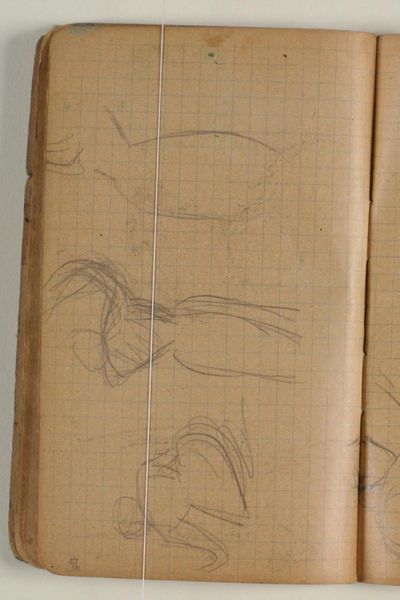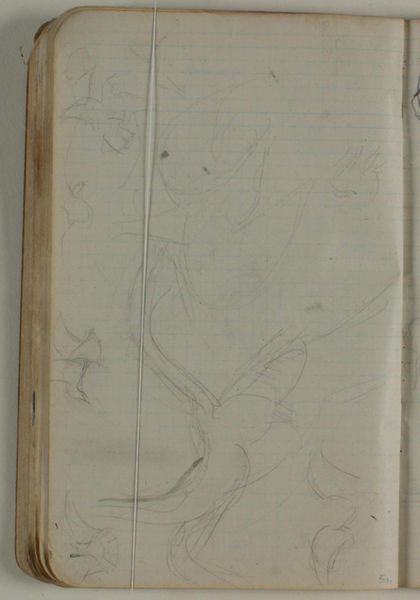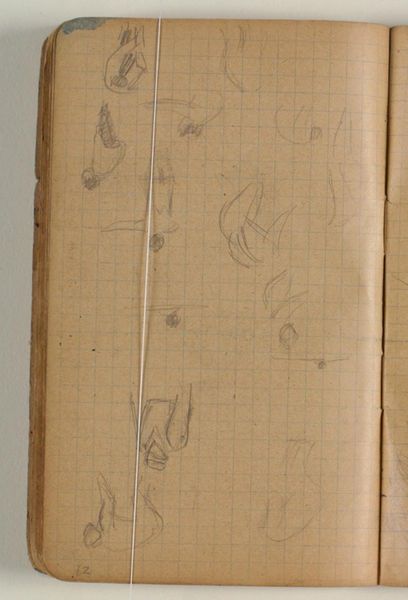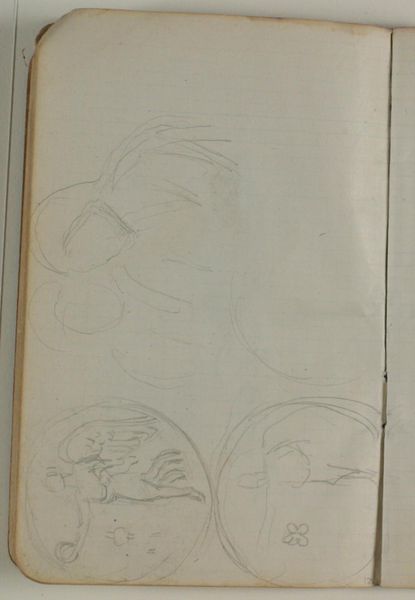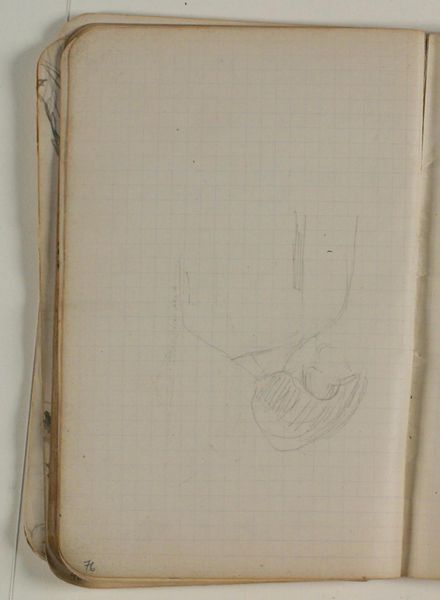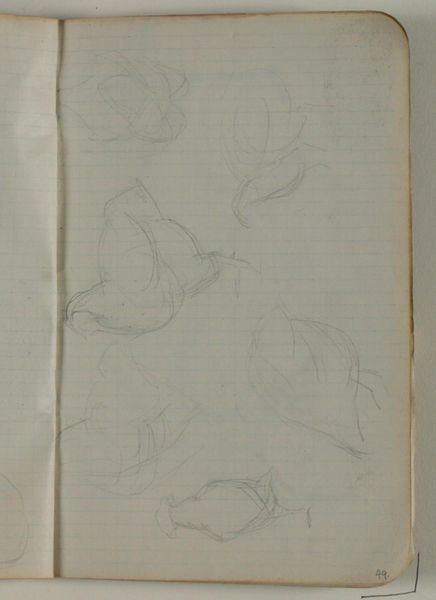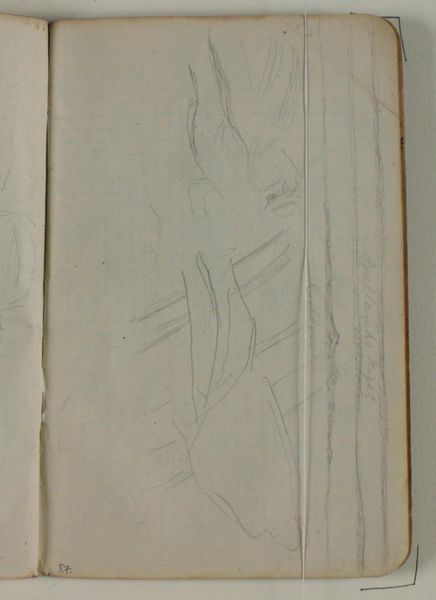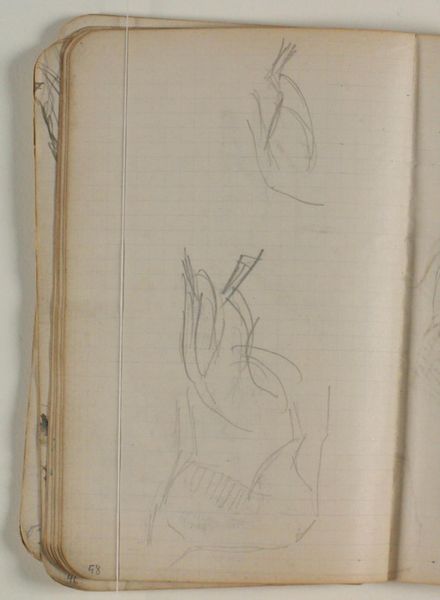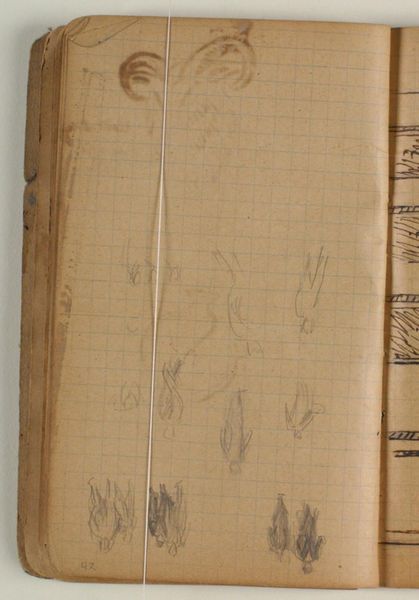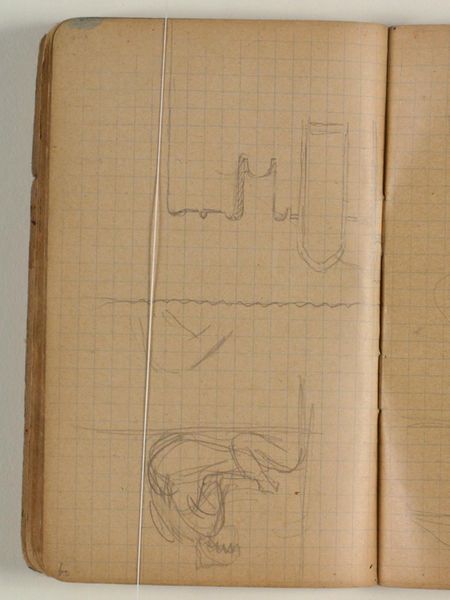
drawing, paper, pencil
#
portrait
#
drawing
#
figuration
#
paper
#
coloured pencil
#
pencil
Dimensions: 163 mm (height) x 97 mm (width) (bladmaal)
Curator: Welcome. We're looking at "Figur- og ansigtsskitser," or "Figure and Face Sketches" by Niels Larsen Stevns, created in 1906. It’s part of the collection at the SMK, Statens Museum for Kunst. This work showcases Stevns’s early explorations in portraiture and figuration, primarily through pencil and some colored pencil on paper. Editor: It gives the impression of a fleeting moment captured in raw form, like a personal diary page left open to share vulnerable thoughts. The rough sketches create an intimate mood. Curator: Absolutely. Consider the artistic climate of the time; Stevns and his contemporaries were deeply engaged in a quest to capture psychological realism, aiming to portray the inner states of their subjects. The loose style and varied perspectives, some incomplete, gives immediacy and a feeling that the images come right off the artist's mind onto the page. Editor: Yes, and the sketch-like quality underscores the human element, highlighting the artist's hand. It feels very direct and personal. Were studies like this generally meant to be kept private? Curator: That is debatable. Many artists of his period considered sketches as legitimate works worthy of exhibition; and if kept private, these nonetheless provided fertile ground for larger compositions, acting as important springboards. Stevns, for example, likely used them as studies for larger pieces where the emphasis would have been not only on appearance, but also on psychological truth, perhaps of the social environment in which his subjects found themselves. Editor: I’m intrigued by that social environment aspect. Can we read into these figures a sense of their socio-economic background? Or do they defy easy categorization? Curator: It’s tough to say definitively. What we do see are the universal markers of humanity: vulnerability, reflection, the weight of thought. In many ways, Stevns allows these figures to stand as symbols of larger cultural themes: modern anxiety, societal pressure, etc. Editor: Well, looking closer now, that element of vulnerability resonates even stronger. I think you are right: there are aspects we can all relate to. Curator: Indeed, its open for reinterpretation today, more than a century after its creation. Editor: It's a work that reminds us that even preparatory drawings can hold profound emotional and social weight. Curator: A perfect glimpse into the creative and social milieu of its time.
Comments
No comments
Be the first to comment and join the conversation on the ultimate creative platform.

